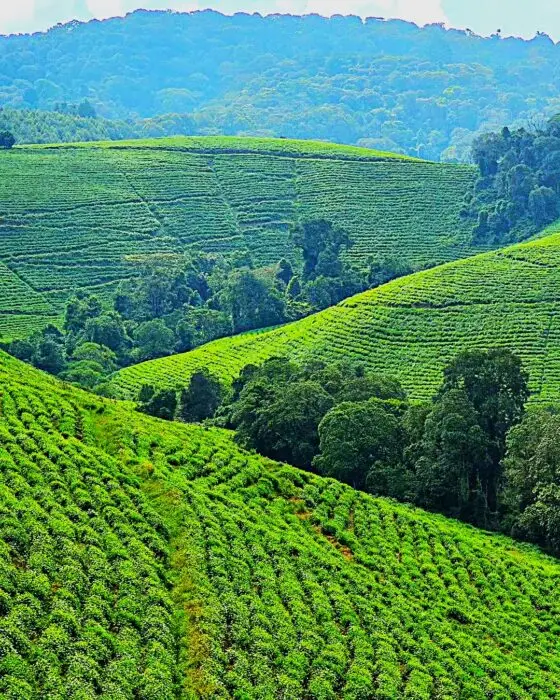Teza tea plantations, 600 hectareslocated at the edge of the Kibira forest in the Burundian highlands, are one of the country's oldest and most emblematic tea plantations. Founded in 1967, these plantations were established as part of the expansion of tea cultivation initiated by Belgian settlers in 1931. Today, they play a crucial role in the local and national economy, while providing a spectacular landscape for visitors and locals alike.
History and economic importance
The Teza plantations were established in 1967, following the success of the first tea-growing experiments in Burundi. Situated at an altitude of between 1,800 and 2,300 metres, the plantations benefit from an ideal climate for tea growing, with cool temperatures and abundant rainfall. The tea produced here is renowned for its exceptional quality, and is mainly destined for export to international markets, making it a key product for the Burundian economy.
The tea sector is vital to Burundi, representing a major source of foreign currency for the country. In 2022, tea exports generated over 51 billion Burundian francs. However, despite this significant contribution, production remains relatively low compared with the country's potential. The Office du Thé du Burundi (OTB) estimates that current annual production of 12,000 tonnes could be increased with better infrastructure and modernized processing equipment.
Advantages of Teza Tea Plantations
Teza's plantations offer a number of advantages, both for the economy and for the local environment. Firstly, they are a major source of employment for the local population. Thousands of Burundians work on the plantations, either as tea leaf pickers or in the processing plants. Tea growing in Teza also contributes to environmental conservation. The plantations are located on the edge of the Kibira forest, an essential nature reserve, and play a role in protecting this biodiversity by preventing deforestation.
In terms of tourism, Teza has become a popular destination for ecotourism enthusiasts. The beauty of the landscape, combined with the opportunity to discover the traditional processes of tea harvesting and processing, attracts visitors from all over the world. The lush green surroundings and pure mountain air make Teza a place of relaxation and discovery for travellers.
Challenges and problems
Despite its many assets, Teza's plantations face a number of challenges. One of the main problems is the low income of tea workers. The price paid to growers for tea leaves is often insufficient to cover their needs, leading some to consider replacing tea with other, more profitable crops. In addition, delays in the supply of fertilizers and a lack of quality seedlings compromise plantation productivity.
Burundi's tea sector, including Teza, also suffers from a lack of investment. Processing infrastructures are aging, and although plans exist to modernize facilities, implementation remains slow. OTB has recognized the need to improve productivity to meet international competition, but this requires substantial financial resources which the country is struggling to mobilize.
Finally, Teza's tea plantations, like many others around the world, are vulnerable to climate change. Variations in temperature and unpredictable rainfall can affect the quality and quantity of harvests, jeopardizing the economic viability of this activity for years to come.
Conclusion
The Teza tea plantations are a pillar of the Burundian economy and a symbol of the country's agricultural history. They offer significant economic and environmental benefits, but also face major challenges that threaten their long-term survival. The modernization of infrastructures, better remuneration for producers, and policies adapted to cope with climatic hazards are essential to guarantee the future of this sector.


There are no reviews yet. Be the first one to write one.